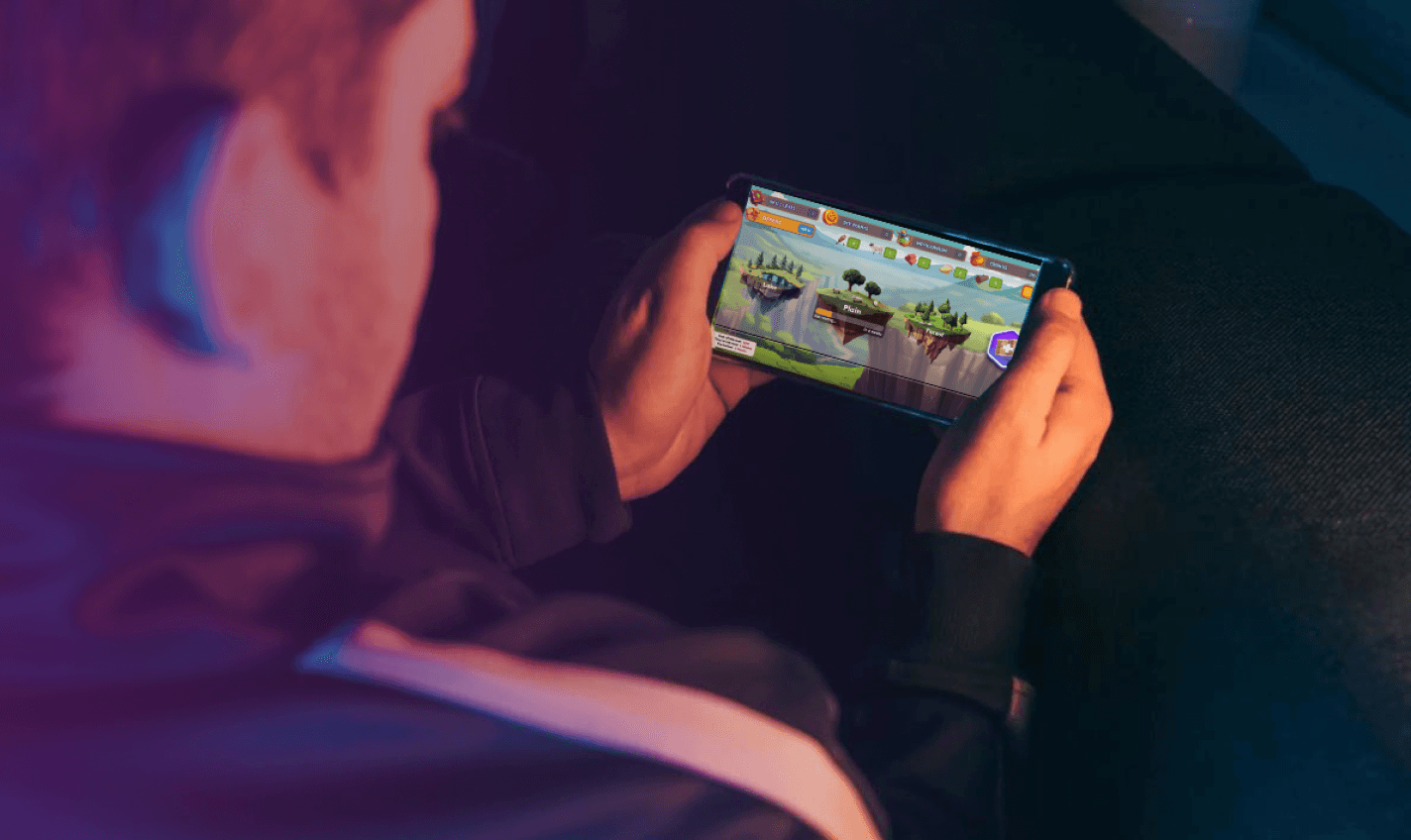Fostering connections and nurturing collaboration are no longer optional—they’re essential. But how do you bridge the gaps between team members who might be meeting for the first time, collaborating virtually, or tackling high-pressure projects? The answer lies in the often-underestimated power of ice breaker games.
These activities are more than just warm-ups or fillers—they are strategic tools designed to break down barriers, spark meaningful interactions, and create a fertile ground for learning and development. Ice breaker games have evolved far beyond simple introductions; they are now key instruments in cultivating trust, enhancing communication, and fostering innovation within teams. They don’t just start conversations—they build bridges.
In this article, we explore the magic behind ice breaker games and why they are indispensable for learning and development. From promoting psychological safety to encouraging creative thinking, we’ll uncover how these seemingly playful activities can have profound impacts on individual growth and team success. And with Evivve at the forefront of gamified learning, we’ll also highlight how modern technology can elevate these experiences to new heights.
Get ready to dive into a world where games aren’t just for fun—they’re for growth, connection, and transformation.
Understanding Ice Breaker Games: The Key to Connection and Collaboration
Ice breaker games are often seen as lighthearted activities to kick off meetings or events, but their true potential runs much deeper. These games are strategic tools that help dissolve barriers, spark curiosity, and lay the foundation for meaningful interaction within teams. Whether used in training sessions, brainstorming meetings, or onboarding programs, ice breaker games are the glue that brings teams together, fostering an environment of trust and openness.
What Exactly Are Ice Breaker Games?
At their core, ice breaker games are structured activities designed to:
- Encourage active participation from all members.
- Establish psychological safety, where everyone feels comfortable sharing.
- Build personal connections by promoting authentic conversations.
- Set the tone for collaborative and productive interactions.
From casual “get-to-know-you” questions to immersive team challenges, these games can adapt to suit a variety of purposes. They can be quick and easy or deeply engaging, depending on the group’s needs.
Creative Ice Breaker Games for Every Occasion
Quick and Fun Ice Breakers
- Two Truths and a Lie: Share two truths and one lie about yourself. Can your teammates guess the lie?
- Speed Networking: Spend one minute chatting with every team member to learn one unique fact about them.
- Emoji Story: Describe your weekend using only emojis.
- Desert Island Picks: If you were stranded on a desert island, what three items would you take?
Ice Breakers for Virtual Teams
- Virtual Scavenger Hunt: Find and show an item in your home that represents your personality.
- “What’s in Your Mug?”: Share what you’re drinking and the story behind it.
- Online Trivia: Play a quick round of trivia using a platform like Kahoot or Quizizz.
- Show and Tell: Share an object on your desk that has a personal story behind it.
Ice Breakers for Large Groups
- Human Bingo: Create a bingo card with traits like “has traveled to three countries” or “can play an instrument.”
- Cluster Conversations: Break into small groups based on categories like favorite movies, hobbies, or pets.
- Pass the Ball: Pass a virtual or real ball around, and whoever catches it answers a question.
- Chain Reaction: Each person adds one line to a collaborative story.
Why Ice Breakers Are Essential for Learning and Development
- Promoting Inclusivity: By giving everyone a chance to speak, ice breakers ensure that quieter team members feel heard.
- Fostering Trust: Sharing personal anecdotes through these games builds a foundation of trust within the team.
- Setting the Mood: Starting with a fun and engaging activity puts the group in a collaborative mindset.
Ice breaker games aren’t just an accessory to team activities—they are an integral part of creating a cohesive, engaged, and high-performing team. Up next, we’ll dive deeper into the psychology behind why these games are so effective.
What Are Ice Breaker Games?
Ice breaker games are far more than just icebreakers—they're strategic catalysts for fostering genuine relationships, improving team dynamics, and creating an environment ripe for collaboration. These activities act as bridges, connecting individuals who might otherwise remain distant, and paving the way for shared understanding and camaraderie.
Whether it’s a newly formed team, a group navigating virtual work, or a seasoned crew looking to reignite their spark, ice breaker games provide a safe and structured space to interact, engage, and learn about one another.
Why Ice Breaker Games Matter in the Workplace
- Encourage Participation: Ice breakers give every team member a voice, especially those who may not naturally speak up.
- Ease Anxieties: Starting with a fun activity lightens the mood and reduces tension.
- Build Personal Connections: These games allow people to discover shared interests and experiences.
- Enhance Collaboration: By breaking down silos, ice breakers foster an open flow of ideas and teamwork.
Ice Breaker Games That Redefine Interaction
Classic Ice Breaker Games
- Name Game: Share your name and one fun fact about yourself.
- Would You Rather?: Pose quirky dilemmas like, “Would you rather have invisibility or the ability to fly?”
- The Memory Game: Start with a phrase like, “I’m going to the moon and bringing…” Each person adds an item and must remember the previous ones.
- The Marshmallow Challenge: In teams, build the tallest tower using spaghetti, tape, and a marshmallow.
Work-Focused Ice Breakers
- Problem-Solving Brainstorm: Pose a hypothetical work challenge and brainstorm solutions as a team.
- Quick SWOT Analysis: Ask each person to share a strength, weakness, opportunity, and threat they’ve observed in their work.
- Team Map: Create a map of the office or virtual setup, highlighting where everyone works or lives.
- Role Reversal: Switch roles for a day and share what you learned.
Ice Breakers for Virtual Teams
- Virtual Background Stories: Ask team members to set a fun virtual background and explain the story behind it.
- Digital Pictionary: Use a virtual whiteboard tool to draw and guess prompts.
- Virtual Coffee Roulette: Pair team members for 5-minute coffee chats to learn about each other.
- Emoji Reactions: Share a scenario and have participants respond with an emoji that describes how they feel.
How Ice Breaker Games Elevate Learning and Development
- Enhancing Emotional Intelligence: By focusing on interpersonal skills, ice breakers develop empathy and emotional understanding.
- Building Team Cohesion: They provide a foundation for long-term collaboration by encouraging participants to see each other as allies.
- Creating a Positive Atmosphere: When teams start with laughter and openness, the overall experience becomes more productive.
Ice breaker games go beyond merely starting a meeting—they set the stage for trust, engagement, and high-impact collaboration. As we delve into their role in active learning, you'll see how these games can transform passive groups into dynamic teams.
How Ice Breaker Games Inspire Participation
In a learning environment, engagement is the fuel that drives meaningful outcomes. Ice breaker games are the spark that ignites that engagement. They create an atmosphere where participants feel energized, connected, and ready to dive into the material. By encouraging active participation from the outset, these games transform attendees from passive listeners into active contributors.
Why Active Engagement Matters
- Boosts Retention: When learners are engaged, they retain more information and apply it effectively.
- Encourages Collaboration: Active participation fosters group dynamics and creates a shared sense of purpose.
- Inspires Creativity: Fun and interactive activities stimulate innovative thinking and problem-solving.
- Reduces Barriers: Ice breakers ease initial discomfort, making it easier for everyone to engage openly.
Ice Breaker Games to Drive Engagement in Learning
Quick Interactive Games
- Speed Networking: Pair participants for 2-minute conversations before switching.
- Two-Minute Problem Solver: Present a challenge and ask teams to brainstorm solutions in 120 seconds.
- Alphabet Brainstorm: Pick a topic (e.g., leadership qualities) and have teams come up with relevant words for each letter of the alphabet.
- Guess Who?: Write random facts about participants and let others guess who they belong to.
Collaborative Group Activities
- Ball Toss Challenge: Toss a ball to a teammate while sharing something they want to achieve from the session.
- Human Bingo: Create a bingo card with fun facts like “has traveled to three continents” or “speaks more than two languages.”
- Tower of Trust: Build a structure using blocks or paper, with each piece representing a shared team value.
- Quote Match: Provide famous quotes and have participants guess who said them.
Scenario-Based Ice Breakers
- Survival Scenario: Present a survival situation (e.g., stranded on a desert island) and have participants decide what five items to keep.
- Resource Allocation: Create a hypothetical scenario where teams must allocate limited resources (e.g., a rescue mission).
- Time Travel Debate: Ask participants which historical era they’d visit and why.
- Industry Challenge: Pose a real-world industry issue and have participants brainstorm innovative solutions.
How Ice Breaker Games Foster Deeper Engagement
- Encouraging Reflection: Games like “What’s One Thing You’d Change?” prompt learners to reflect on personal growth and connect it to the session.
- Building Momentum: High-energy activities set a dynamic tone for the session, making participants eager to contribute.
- Creating Shared Experiences: Games build a sense of community by offering a shared moment of fun and collaboration.
Practical Example: Using Ice Breaker Games in a Workshop
Imagine starting a session with the “Two-Minute Problem Solver.” Participants are given a common challenge, like “How to foster better virtual communication,” and tasked to brainstorm solutions with a partner. This simple exercise not only breaks the ice but also aligns the group’s focus on the session's objective.
By incorporating thoughtfully chosen ice breaker games, facilitators can create an active learning environment where everyone feels motivated to participate and contribute. The result? A more engaged, dynamic, and successful session.
Evivve's Role in Facilitating Engagement: Ice Breaker Games Reimagined
Evivve has revolutionized the way ice breaker games are used in learning and development, blending gamification with purpose-driven activities that spark collaboration, creativity, and critical thinking. Its dynamic platform doesn't just engage participants—it transforms passive learners into active contributors through immersive experiences that mirror real-world scenarios.
Let’s explore how Evivve sets a new benchmark in engagement and reshapes the role of ice breaker games in the workplace.
Why Evivve Excels at Driving Engagement
- Gamification at Its Core: Evivve uses interactive gameplay to make learning fun, ensuring participants stay engaged throughout the session.
- Real-Life Application: Unlike traditional ice breakers, Evivve’s scenarios mimic workplace challenges, fostering practical problem-solving skills.
- Team Collaboration: Multiplayer formats emphasize teamwork, encouraging participants to work together toward common goals.
- Immersive Storytelling: The platform incorporates sci-fi narratives to captivate participants, making each game session both educational and entertaining.
How Evivve Redefines Ice Breaker Games
Interactive Multiplayer Challenges
Evivve's multiplayer format ensures no one is left out. Participants navigate scenarios requiring cooperation, resource management, and strategic planning.
Example Game:
Resource Quest
Teams manage limited resources to achieve collective objectives, mirroring workplace dynamics. Players learn to communicate effectively and prioritize tasks under pressure.
Real-Time Feedback
The platform provides instant insights, enabling participants to reflect on their gameplay and identify areas for improvement.
Example:
During a game focused on decision-making, participants receive feedback on their choices, helping them understand the impact of their strategies in real-world contexts.
Customizable Learning Goals
Evivve adapts to diverse learning objectives, making it a versatile tool for team-building, leadership development, and strategic thinking.
Example:
A session aimed at improving team communication might feature games that require players to rely solely on verbal instructions to complete tasks.
Evivve-Inspired Ice Breaker Games for Engagement
Games for Communication
- Blindfolded Navigator: One player gives verbal instructions to a blindfolded teammate to complete a maze.
- Decode the Message: Teams work together to decipher a coded message using clues hidden in the game environment.
Strategic Planning Games
- Timekeeper’s Dilemma: Teams manage a limited time frame to solve a multi-step challenge.
- Resource Ration: Allocate finite resources to complete tasks, teaching prioritization and decision-making.
Collaboration Challenges
- Tower of Unity: Build the tallest tower using limited supplies while ensuring everyone contributes.
- Mission Control: Teams coordinate roles to execute a complex task, emphasizing the importance of clear communication.
Key Benefits of Evivve’s Approach to Ice Breaker Games
- Enhanced Learning Retention: Gamification ensures concepts stick, turning theoretical knowledge into actionable skills.
- Inclusivity: Evivve's structure allows for equal participation, ensuring all voices are heard.
- Cross-Functional Collaboration: Participants from diverse backgrounds learn to work together effectively.
- Fun Meets Functionality: By integrating play into learning, Evivve ensures participants are both engaged and motivated.
Practical Example: Using Evivve in a Leadership Workshop
Picture this: A team is tasked with saving their fictional space colony from an impending disaster. Through collaborative decision-making, resource allocation, and critical thinking, participants learn valuable leadership skills in an immersive, high-stakes environment.
Evivve transforms ice breaker games into tools of engagement, innovation, and growth, making every session a stepping stone toward professional excellence.

Glossary Defined
Your comprehensive guide to the Evivve ecosystem. Define key terms, from the AFERR model to Systems Thinking, to deepen your platform knowledge.


Single-Player Game
Your complete support resource. Access step-by-step guides, program templates, and technical documentation to optimize your facilitation workflow.


Official Newsroom
Explore Evivve’s official press releases, industry awards, and media features. A curated hub demonstrating our leadership and impact in the L&D space.


Leave A Reply
Your email address will not be published. Required fields are marked *